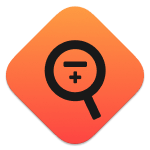There is popular information on the Internet that on the surface of the Pacific Ocean there is an entire island (in other sources - a continent) made of plastic bottles and other garbage, which is even visible from space. We checked whether this is actually true.
The object in question is known as the Great Pacific Garbage Patch. Its existence in 1988 predicted scientists working in Alaska. And in 1997, American yachtsman Charles Moore, returning from Hawaii to California on a catamaran, discovered on his way a gigantic zone that consisted of various wastes of human activity. According to his calculations, we could be talking about 3 million tons of garbage and an area the size of Texas. At first, he found mostly plastic bottles, bottle caps, and various wrappers, but a year later, Moore found items such as a volleyball, a cathode ray tube for a 19-inch TV, and even a truck tire. At the same time, the debris did not leave the giant spiral formed by the Pacific currents. Further estimates that can be found in the press already speak of an area of two Texas.
The problem attracted the interest of specialists from all over the world, research began, press releases began, followed by popular science projects, and gradually the public got the impression that the Pacific Garbage Patch was a homogeneous mass of plastic. A very characteristic case in this sense was the case of 2015, when on a Facebook page called Ripley's Believe It or Not! ("Ripley's Believe It or Not") was published photo a small boat, as if stuck in a sea of objects made of wood and plastic. The caption for the picture read: “The Great Pacific Garbage Patch covers 8.1% of the Pacific Ocean, an area twice the size of the continental United States.”

To begin with, let us note that this photograph was done back in 2011, off the coast of the Japanese village of Wakuya, which, among others, suffered from a devastating earthquake that claimed almost 16,000 lives.
The situation captured in the photo could not be a fragment of the patch of interest to us, not so much because of the prevalence of plastic (rather than wood) in the ocean, but because in fact the Great Pacific Garbage Patch in the 21st century practically does not consist of whole objects. It consists of millions, trillions of tiny pieces of plastic called microplastics. Microplastics cannot always be seen with the naked eye even from the surface of the water, not to mention satellite images, which are often were mentioned (but never shown) in the media. This kind of “soup” also contains the remains of fishing gear and shoes. At the same time, oceanographers and ecologists recently discovered that about 70% of marine debris sooner or later sinks to the ocean floor. This is another problem - due to their small size, marine animals mistake these bright pieces for food. Now, on average, for every square kilometer of seabed there is about 70 kg plastic.
As for the size of the patch, a 2011 study by the University of Oregon found that the actual size of the Great Pacific Garbage Patch is hundreds of times smaller than commonly claimed. “There is no doubt that the amount of plastic in the world's oceans is alarming, but such exaggeration undermines the credibility of scientists,” speaks one of the researchers, Angel White. “We have the data to make reasonable estimates. We don't need exaggeration. Given the observed concentrations of plastic in the North Pacific, it is incorrect to say that it outweighs plankton or that we are seeing an exponential increase in the amount of plastic."

Let us add that there are most likely more than one huge garbage patches in the World Ocean, as well as giant whirlpools formed by currents. Scientists, of course, are sounding the alarm, and it’s worth listening to them. However, many kilometers of layers of bottles on the surface of the water, as well as the visibility of the garbage patch from satellites, are myths.
Mostly lies
Read on topic:
2. https://www.nationalgeographic.com/news/2018/03/great-pacific-garbage-patch-plastics-environment
3. https://www.snopes.com/fact-check/great-pacific-garbage-patch/
4. https://mytomra.com/en/taking-a-dive-into-the-great-pacific-garbage-patch
5. https://oceana.org/blog/3-misconceptions-about-great-pacific-garbage-patch
If you find a spelling or grammatical error, please let us know by highlighting the error text and clicking Ctrl+Enter.







